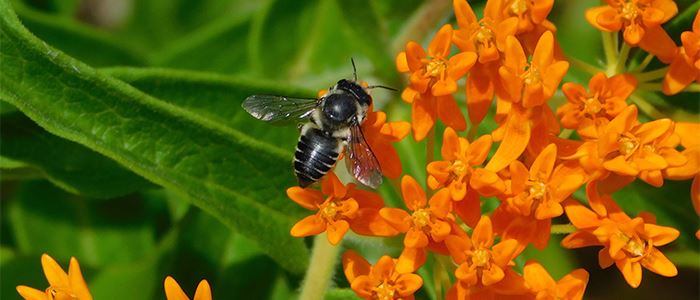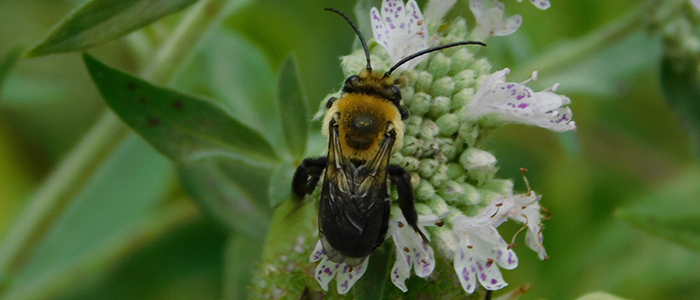Remarkable Pollinators: Part 4

Remarkable Pollinators: Part 4: Bees
By: Ashley Fink and Liz Stahl
Photo: Leafcutter Bee, by Liz Stahl
Over three quarters of the cultivated crops in the United States are actually pollinated by bees. These remarkable insects are extremely important to the process of pollination because they can collect pollen from the same plant species. Visiting one plant many times is called flower constancy which results in flower pollination of the same species. Many other pollinators will visit different types of blooms, regardless of the species.
Bees use buzz pollination when visiting plants that have pollen grains located inside pores along the flower anthers. In order to overcome difficulty releasing the pollen, some bees are skilled in being able to vibrate their flight muscles in their thorax at a high frequency so that pollen is shaken and released in large quantities. Buzz pollination is an action that over 20,000 species rely on such as some wildflower species, tomatoes, eggplant, cranberry, and blueberry.
Sadly, the populations of these pollinators that we depend on so heavily are in decline. To support local bee populations, consider taking these steps in making your landscape more inviting: Plant a wide variety of native shrubs, trees, and flowers. A diversity of native plant species that bloom at different times of the year will also help keep many types of pollinators present in your garden as long as possible. Queen bumblebees need sustenance in the early, cool spring weather in order to get their annual brood started.
Leave logs or tree snags and plants with hollow or pithy stems to provide nesting sites for early ground or cavity nesting species. Bare ground, if available, is also favored by many of the smaller bees for nesting. Lastly, decreasing the use of pesticides will increase your chances of natural pollinators making a visit. Taking steps to improve your landscape to attract important pollinators is vital for sustaining the next generations of bees that call northwest Ohio home.

Photo: Thistle Longhorn Bee, by Liz Stahl.
Fun fact: Longhorn bees will sleep huddled together on stems and twigs.
Did You Know? Bees can carry up to 122 times their body weight in pollen and nectar.